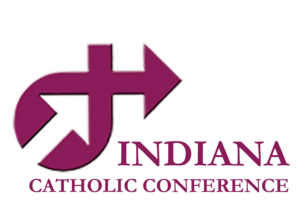By Victoria Arthur
Statehouse Correspondent for Indiana’s Catholic Newspapers
Editor’s note: As Indiana marks a decade of school choice and increased opportunities, legislation would expand the innovative program to more families. This is the first in a series of features about school choice in Indiana.
 Exactly 10 years after the passage of groundbreaking legislation that made Indiana a national leader in school choice, the Statehouse is in the spotlight again as lawmakers weigh the first major expansion to the program since 2013.
Exactly 10 years after the passage of groundbreaking legislation that made Indiana a national leader in school choice, the Statehouse is in the spotlight again as lawmakers weigh the first major expansion to the program since 2013.
More than a quarter-million Hoosier students have benefited from Indiana’s Choice Scholarship Program, more commonly known as the voucher program, since it was signed into law by then-Gov. Mitch Daniels in the spring of 2011. The current legislation under review would expand eligibility to allow even more parents to select the school they believe is best for their children – a move that advocates say is critical to extending educational opportunities to as many Hoosier families as possible.
As he was a decade ago, the lawmaker behind the current effort is Rep. Bob Behning (R-Indianapolis), chairman of the House Education Committee.
“The whole focus on what we did in 2011 was to put kids first,” Behning said. “That is not a condemnation of our traditional educational model. It’s just an acknowledgment that people are different; and as with everything else in life, choices are important. We have excellent schools across the state, but it is nearly impossible for them to meet every unique need of every child.
“While many Hoosier families already enjoy the flexibilities of Indiana’s school-choice program, there is still a large group shut out of these opportunities,” Behning added. “When we started looking at the current eligibility requirements, we found a lot of hardworking families still could not send their child to the school of their choice.”
Behning’s proposed legislation, House Bill 1005, would help middle- and upper-middle-class families still struggling to pay for private school tuition by raising the financial eligibility requirements for vouchers. Among other provisions, it also would increase the scholarship amount that a voucher student receives in a school year and create the Indiana Education Scholarship Account, which would provide eligible families funding to directly pay for tuition or other education-related expenses.
The bill, which passed out of the House, was not heard in committee in the Senate. Instead, efforts to expand school choice are now focused on negotiations over the state budget. The House version of the budget included all of the choice language found in Behning’s bill. Meanwhile, the recently released Senate version of the budget contained a scaled-down version of the expansions.
Choice advocates are hopeful that the final budget, through conference-committee negotiations, will more closely resemble the House’s version of the choice expansions. Two of the strongest supporters of these efforts are the Indiana Catholic Conference and the Indiana Non-Public Education Association – two organizations that were instrumental in the creation and passage of the original measure 10 years ago.
“Approximately 273,000 Hoosier students have been blessed with the ability to make an educational choice because of the Choice Scholarship legislation enacted in 2011, and I have been privileged to directly hear the life-changing stories shared by many of those families,” said John Elcesser, executive director of the INPEA, which represents the state’s more-than-400 non-public schools, including Indiana’s 175 Catholic schools. “It is heartening that both the Indiana House and Senate (also) see the value of providing more educational opportunities as evidenced in their budget commitments to expand choice in Indiana.
“The question that remains during the final days of the 2021 General Assembly session is how many more families will be provided that same opportunity? We hope our legislators will be bold in that decision by providing more opportunities for more families – for the betterment of all Hoosier students.”
In recent months, The Wall Street Journal has covered school choice extensively, including research from the University of Arkansas that reveals better test results and student growth in states offering more school options.
Betsy Wiley, who served as deputy chief of staff in the Daniels administration and remains heavily involved in the school choice movement, points to this and other evidence to support the case for school choice. And like other advocates, she is a staunch supporter of the expansion legislation under review at the Statehouse.
“Mitch (Daniels) was always a true believer in education being the great equalizer,” said Wiley, now president and chief executive officer of the Institute for Quality Education and Hoosiers for Quality Education. “Having that support at the very top, combined with the support that our coalition was able to put together at the grassroots level, is what drove success 10 years ago.
“But not every family in Indiana has every option available to them yet,” Wiley continued. “Until that happens, we still have more work to do.”
To follow priority legislation of the ICC, visit www.indianacc.org. This website includes access to I-CAN, the Indiana Catholic Action Network, which offers the Church’s position on key issues. Those who sign up for I-CAN receive alerts on legislation moving forward and ways to contact their elected representatives.
